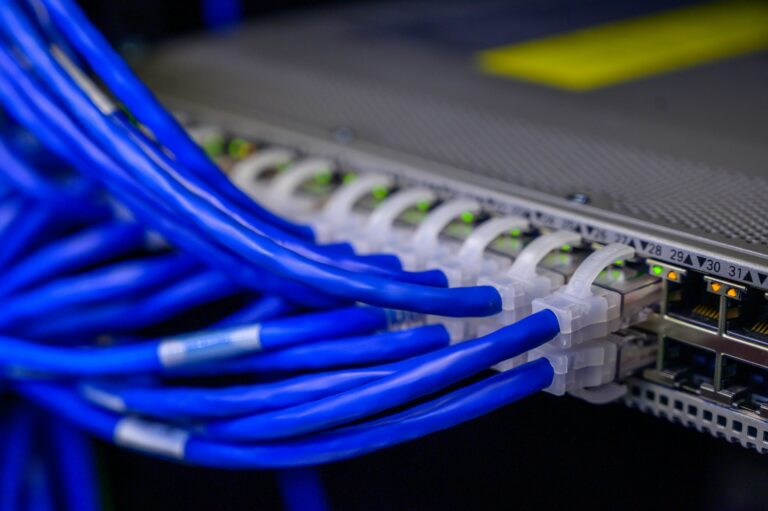Local Area Networks (LAN) part 2

In part 2 of this series, I will discuss normal operation of a LAN and how to recognize problems.
Optimizing Network Performance
Your LAN connects all your computers and printers together and allows each of them to also connect to the internet. Your file server hosts the data for PPBS and is crucial for other computers to access your data. Here are a few suggestions to help you keep things running smoothly.
Cables, Switches and Topology
Always use high quality ethernet cables that are at least CAT 5e. Old or worn cables are frequent causes of network trouble. You should never run ethernet cables across the floor since they can be damaged by just walking on them.
If your cables run through a conduit or a wall, it’s important to label each cable with the device that’s on the other end of the cable. Otherwise, troubleshooting problems later will take significantly longer.
Be sure your switches are gigabit switches (1000 MBPS). Slower ethernet switches of 100 MBPS (sometimes called “Fast”) should be replaced with gigabit switches. For the simple network we’re dealing with here, an unmanaged switch will be fine.
Try to keep your network cabling as simple as possible. The harder it is to describe your wiring over the phone, the harder it will be for someone to help you.
Signs of Trouble
Loss of internet connection.
If you lose your internet connection but everything else is working, you might have a problem with your router. The best approach here is to power down the router, restart it and wait a few minutes. If the internet comes back, good! If not you might need to contact your internet service provider.
Remember that your browser saves a copy of recent web sites you’ve visited, so it might look like the internet is working when it’s not. If you want to be sure the internet is working, try a different site, maybe one you seldom use.
Loss of all connectivity except Internet
If none of the devices are talking to each other, but you still have internet, you could have an IP problem. Shut down all the computers and printers, unplug the power to all switches, then shut down the router. Turn the devices back on in this order:
- The router and all switches, then wait 5 minutes
- The printers, and the file server
- All other devices.
If you’re still having trouble, call PPBS Support and we will try to help you.
FAQ
I’m working on some frequently asked questions to help troubleshoot network problems, so stay tuned!

